There are many Linux distros that claim to be the best. Many of them like Ubuntu, Linux Mint, Zorin OS, Deepin Linux and Elementary OS are indeed very well designed. They all offer a unique take on Linux and each has something special to offer.
But there is a lesser-known official Ubuntu distro that really gets the thumbs up from new users. This distro is Ubuntu Budgie. Not only is this version of the Linux desktop very user-friendly, but it also looks very… beautiful.
One of the things I really like about Ubuntu Budgie is how it seems to nod to so many other desktop interfaces, to merge them into one. It’s a bit like Pantheon, GNOME, KDE and Cinnamon coming together to create something very unique and easy to use.
This distro could be the perfect introduction to Linux
At the heart of Ubuntu Budgie is the Budgie desktop, which was originally the official desktop for EvolveOS, created by Ikey Doherty. Doherty eventually renamed his operating system Solus, intending to use GNOME components to create a more traditional user interface.
Doherty eventually left the project, but Budgie continued. Today, Budgie has become the centerpiece of the official Ubuntu spin whose site even claims that it is “friendly for novices coming from other operating systems and for both programmers and ordinary users”.
I’m always on the lookout for ideal Linux distros for new users and with the release of Ubuntu Budgie 23.04, I can safely say that this distro could be the perfect introduction to Linux. It has the simple basics of Ubuntu (including Snap packages) and a user interface that makes using Linux as easy as using Windows or macOS.
From the moment you log in and are greeted by the Budgie Welcome app, you feel right at home. And whether you’ve spent most of your years using macOS or Windows, you’ll feel right at home right away.
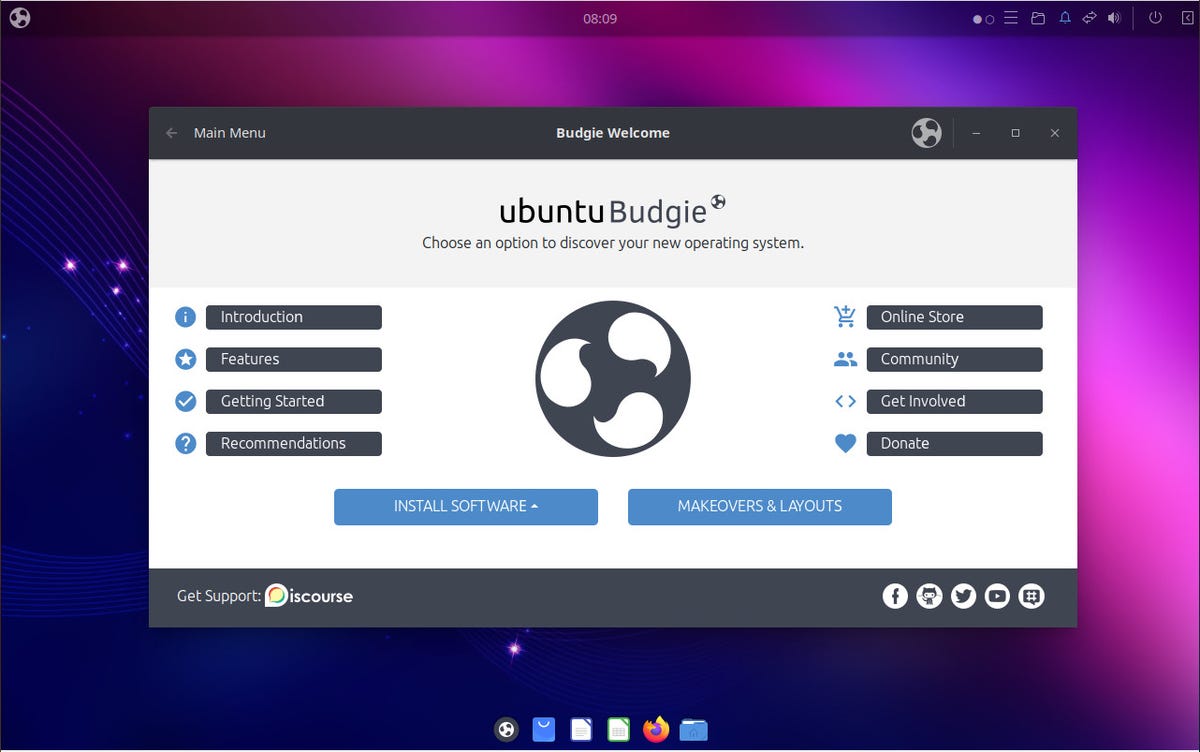
The Budgie Welcome app is a great place to start. Jack Wallen/ZDNET
The beautiful user interface
Ubuntu Budgie’s default desktop includes a menu at the top left, a system tray and notification section at the top right, and a dock at the bottom of the screen.
You’ll also find a fancy calendar and control sidebar on the right edge of the desktop. Click the left-pointing arrow in the upper-right corner to bring up the sidebar, where you can view your calendar, control media playback, and check your notifications.
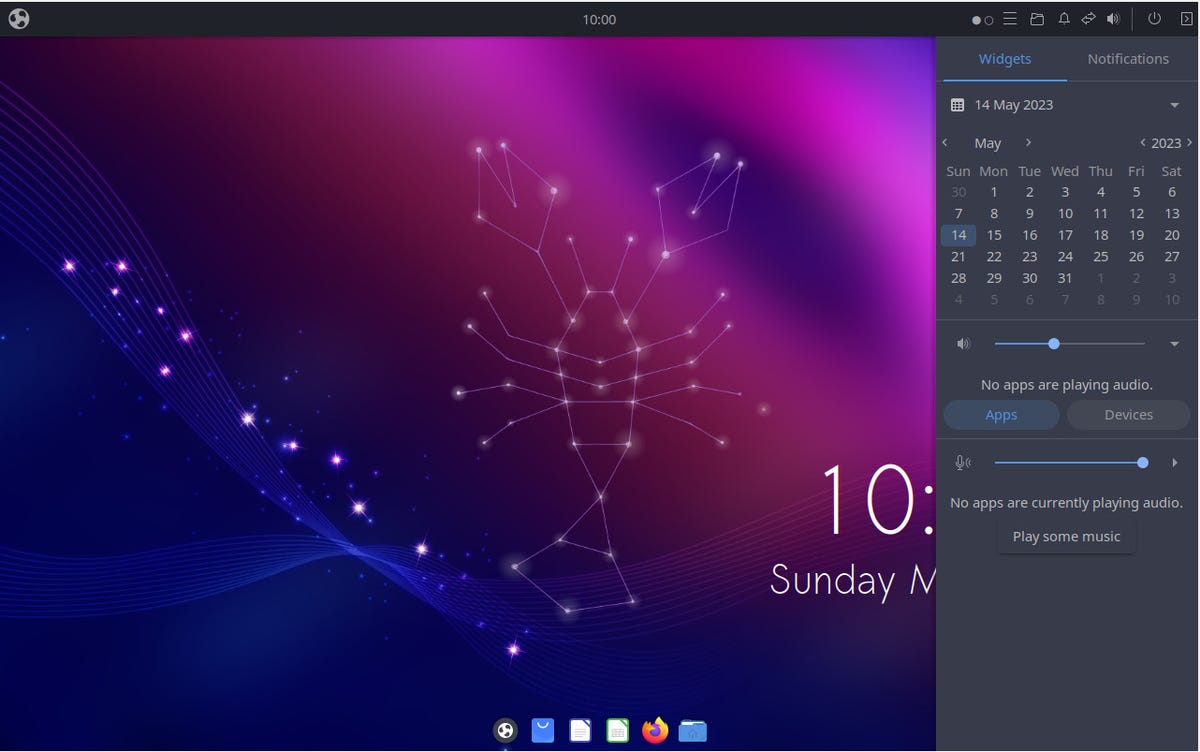
One click is all it takes to access calendar, media controls and notifications. Jack Wallen/ZDNET
Click the desktop menu button in the upper left corner to view all installed apps.
It reminds me a lot of the Elementary OS menu, with a little something extra. If you prefer a more traditional categorized menu, click the right icon in the upper left corner of the open menu and the layout will change to make it easier for those who prefer all their apps grouped into related categories.
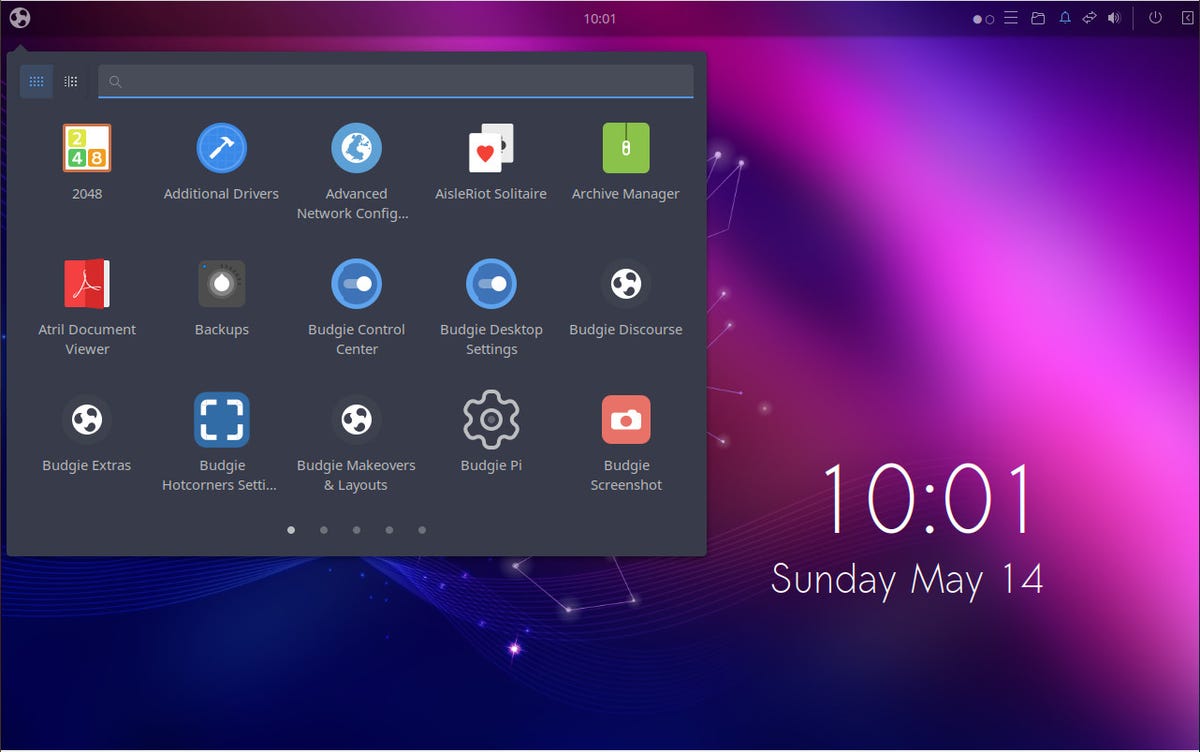
Easy access to installed apps from desktop menu. Jack Wallen/ZDNET
Software preinstalled on Ubuntu Budgie
For those who like to know what they’re getting into before trying something new, here’s a quick list of the apps that come with Ubuntu Budgie:
- Firefox web browser
- Goodvibes online radio player
- gPodder podcast client
- LibreOffice
- Lollypop audio player
- Thunderbird email client
If an app is missing, just open the Software app and install everything you need (including apps available in Snap mode, such as Spotify and Slack.
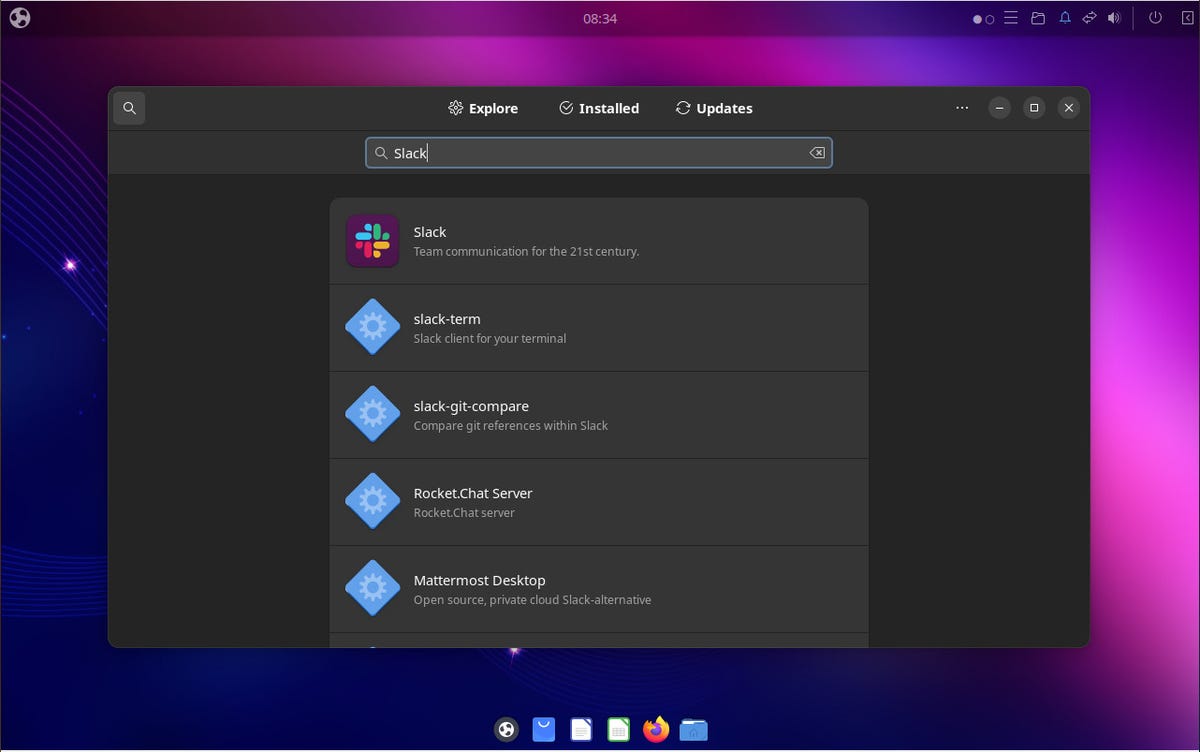
Installing proprietary apps like Slack is simple thanks to Snap’s built-in Software tool. Jack Wallen/ZDNET
Ubuntu Budgie Tiling Options
Although I’m not a big fan of strictly tiled window managers, I regularly use this type of window snapping. For those unfamiliar with window snapping, it’s the ability to attach a window to a specific part of the desktop. Typically, desktop operating systems allow you to easily snap a window to the left or right half of the desktop, full screen, or top or bottom half of the screen. This makes it very convenient to work with side-by-side windows without having to manually adjust their position and size.
With Ubuntu Budgie, it is possible to snap windows to occupy the horizontal or vertical halves, or to snap a window to each corner to occupy a quarter of the screen. With a large enough screen, this feature can take your multitasking to new heights. Of course, with a smaller screen (like when using Ubuntu Budgie in a virtual machine) you might get a little cramped.
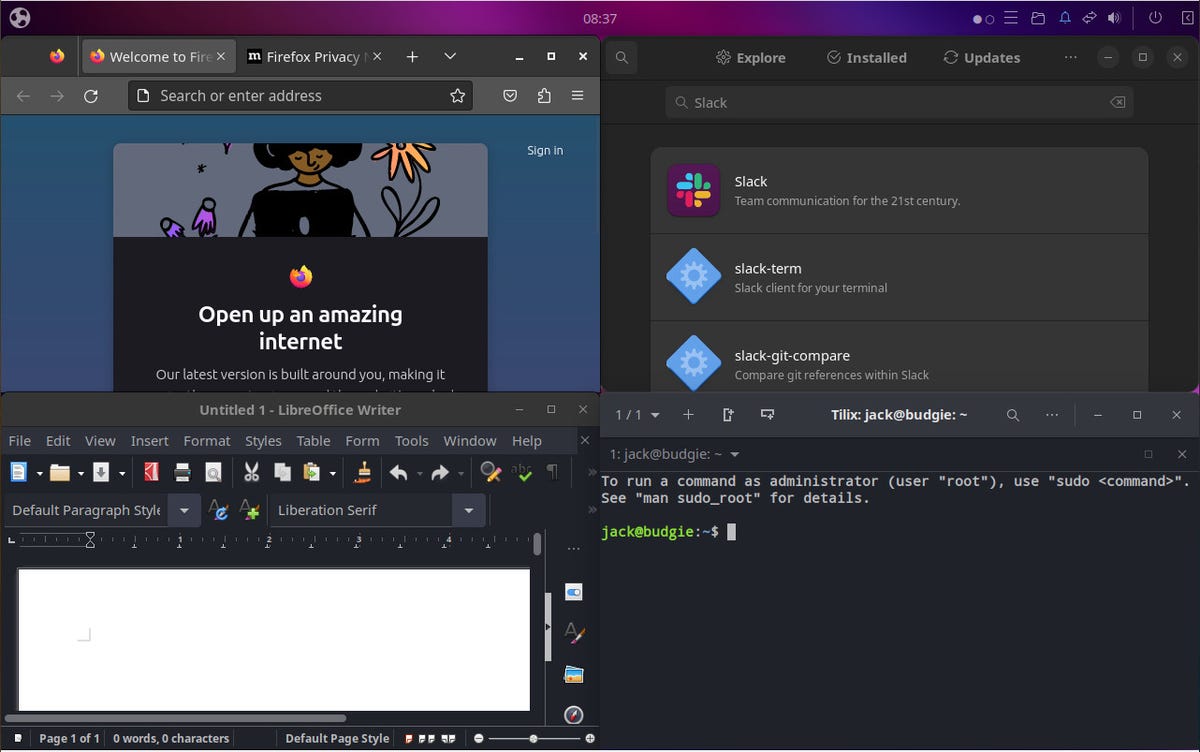
It’s a bit skimpy, but you get the idea. Jack Wallen/ZDNET
The only thing I don’t like is the dark theme… but that’s a very personal matter. I’ve never been a fan of dark themes, so that’s usually the first thing I change on my desktop. Fortunately, Ubuntu Budgie makes this easy with the Budgie Welcome app.
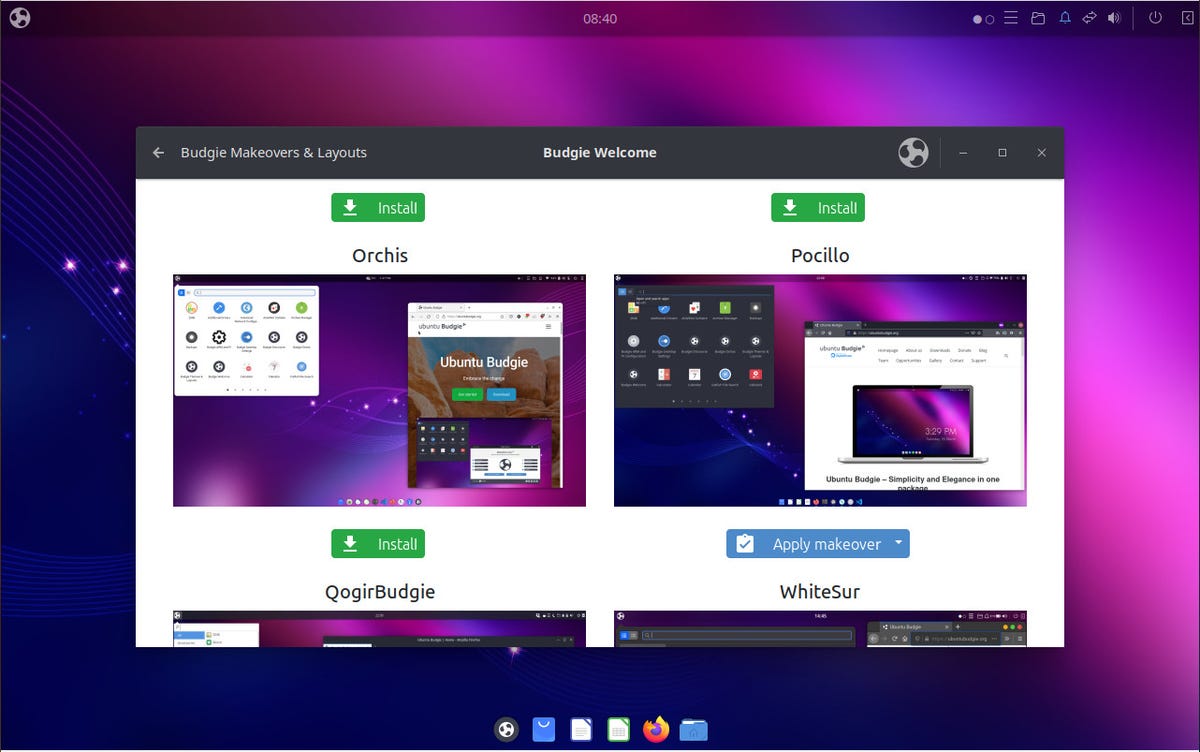
Ubuntu Budgie’s selection of themes and makeovers is minimal but should satisfy all types of users. Jack Wallen/ZDNET
Should you try Ubuntu Budgie?
If you’re looking for a new operating system that’s as simple as it is beautiful, that won’t get in the way, challenge your skills, or limit you, Ubuntu Budgie is a great option. In fact, I was so enamored during my test period that I’m considering upgrading to Budgie (from Pop!_OS) myself.
Download an Ubuntu Budgie ISO image, create a bootable USB drive, and install the OS on a rescue machine to see if you react like me to this open-source OS.
Source: “ZDNet.com”
